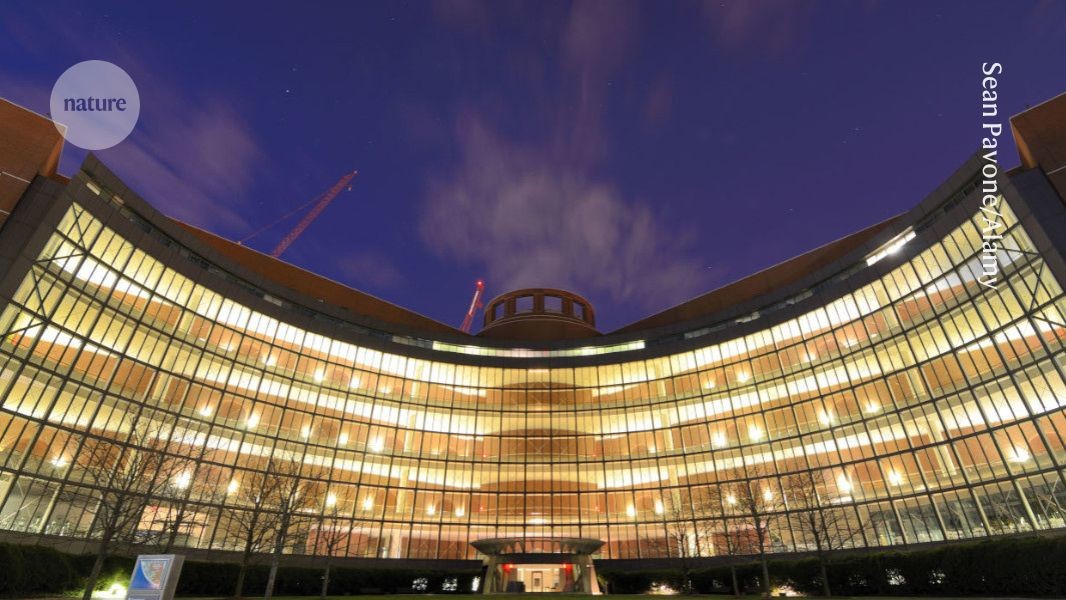Judge rules against NIH grant cuts — and calls them discriminatory

The decision means that the US biomedical agency has to restore funding to hundreds of research projects, but the government will likely appeal

On 16 June at the US District Court for the District of Massachusetts in Boston, a judge ruled that the Trump administration’s slashing of some research grants is illegal.Credit: Sean Pavone/Alamy
A US judge has ordered hundreds of terminated research projects at the US National Institutes of Health (NIH) to be reinstated, calling the processes that led to their cancellation “bereft of reasoning — virtually, in their entirety”.
The ruling came about two hours after a tense hearing in which lawyers representing US researchers and a coalition of 16 states presented arguments for the first time that the NIH’s massive cuts to research are illegal. Since Republican President Donald Trump took office earlier this year, the agency has cancelled funding for a long list of research projects, including those on diversity, equity and inclusion (DEI), sexual and gender minorities (LGBT+) and COVID-19.
In an blistering 15-minute sidebar after issuing his ruling, Judge William Young of the US District Court for the District of Massachusetts in Boston angrily excoriated the Trump administration for its targeting of research about the health of LGBT+ people and racial minorities.
“This represents racial discrimination and discrimination against America’s LGBTQ community. I would be blind not to call it out,” said Young, who was appointed by former US president Ronald Reagan, a Republican. “I’ve been on the bench for 40 years — I’ve never seen government racial discrimination like this.”
This ruling, which the Trump administration is likely to appeal, means that the NIH will have to begin to disburse billions of dollars of funding that it had cancelled. “I’m thrilled and overjoyed,” Katie Edwards, an interdisciplinary public-health specialist at the University of Michigan in Ann Arbor, told Nature. Edwards had six NIH grants cancelled and was one of the researchers who sued the agency. “What the judge said today was spot on — and it highlights the crisis we’re facing right now, where racial and ethnic minorities are being erased,” she said.
The judge’s order will restore funding only to the scientists named in the lawsuits and in the 16 states that sued the government — or about 800 of the more than 2,400 projects that have been cut at the NIH. These lawsuits also did not touch on wholesale grant cuts at institutions such as Harvard University in Cambridge, Massachusetts, that the Trump administration has alleged did not protect their students from discrimination, including antisemitism, on campus.
Andrew Nixon, a spokesperson for the NIH’s parent agency, the Department of Health and Human Services (HHS), says the agency “stands by its decision to end funding for research that prioritized ideological agendas over scientific rigor and meaningful outcomes for the American people” and that it is “exploring all legal options, including filing an appeal”. Neither the HHS nor the NIH, which is the world’s largest public funder of biomedical research, responded to Nature’s query about whether and when they would follow the court’s order to restore funding to the affected projects.
A question of procedure
In an unprecedented move, the NIH began to terminate research grants in late February because they no longer met “agency priorities”. (The agency typically cancels only a handful of projects each year in response to serious concerns about research misconduct or fraud — and does so only as a last resort, after taking other actions such as suspension.)
Lawsuits challenging these cuts were filed in early April, arguing that they were unlawful because the NIH did not follow proper procedures and did not give adequate reasoning for their cancellation.
Representatives of the HHS and billionaire Elon Musk’s US Department of Government Efficiency issued directives to NIH staff members to slash grants on disfavoured topics, and they provided boilerplate language for the employees to use in termination letters to scientists, Nature previously reported. It is these directives that the judge ruled today to be “arbitrary and capricious” and, thus, illegal.
Termination letters sent to some scientists called their projects “often unscientific” or deemed them as supporting “unlawful discrimination”, without backing up the claims. At today’s hearing, Young asked the government’s lawyers if they could provide any examples of grants that supported these claims. “There’s nothing I can point the court to,” the lawyer responded.
The lawyers instead argued that because the lawsuits pertain to contract violations, they should have been filed in a separate court and that Young’s court had no jurisdiction over the matter. Young ruled that he does have jurisdiction in this case; this claim is likely to be the basis for the government’s appeal.
An ‘extraordinary repudiation’
In hearings leading up to his ruling today, Young had hinted that he was frustrated by the government’s broad targeting of DEI, noting that the government had not clearly defined which research projects qualify under this umbrella term. “If putting these words together, DEI, is somehow offensive ... does that mean [the government’s] policy is homogeneity, inequity, and exclusion?” he asked the administration’s lawyers at a hearing on 22 May.
Enjoying our latest content?
Login or create an account to continue
- Access the most recent journalism from Nature's award-winning team
- Explore the latest features & opinion covering groundbreaking research
or
Sign in or create an accountdoi: https://doi.org/10.1038/d41586-025-01914-2
This story originally appeared on: Nature - Author:Max Kozlov


















